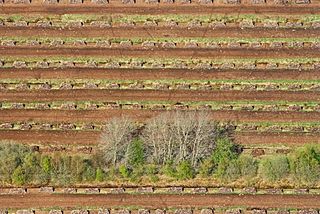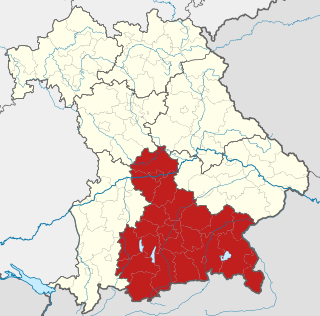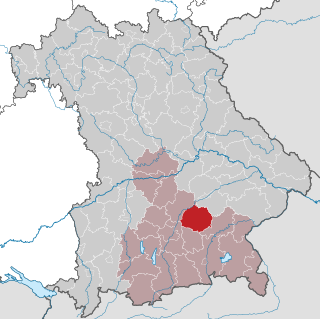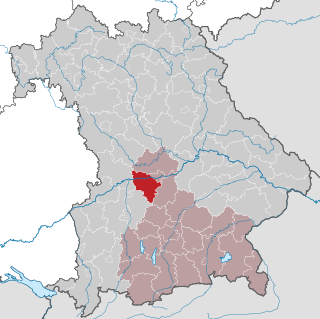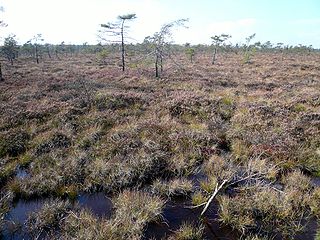| Designations | |
|---|---|
| Official name | Donauauen & Donaumoos |
| Designated | 26 February 1976 |
| Reference no. | 90 [1] |
The Old Bavarian Donaumoos (German : Altbayerisches Donaumoos) is an old fen on the southern side of the Danube, southwest of Ingolstadt, Bavaria, in the Neuburg-Schrobenhausen district. The fen, drained from 1790 onwards, has now dropped 3 metres (9.8 ft) in surface level because of the drainage and associated environmental effects. [2] [3] The Donaumoos was once the largest area of fenland in Southern Germany. [4]

German is a West Germanic language that is mainly spoken in Central Europe. It is the most widely spoken and official or co-official language in Germany, Austria, Switzerland, South Tyrol (Italy), the German-speaking Community of Belgium, and Liechtenstein. It is also one of the three official languages of Luxembourg and a co-official language in the Opole Voivodeship in Poland. The languages which are most similar to German are the other members of the West Germanic language branch: Afrikaans, Dutch, English, the Frisian languages, Low German/Low Saxon, Luxembourgish, and Yiddish. There are also strong similarities in vocabulary with Danish, Norwegian and Swedish, although those belong to the North Germanic group. German is the second most widely spoken Germanic language, after English.

Altbayern is the territory and people of the three oldest parts of the Free State of Bavaria, which were earlier known as Kurbayern after the former Electorate of Bavaria.

A fen is one of the main types of wetland, the others being grassy marshes, forested swamps, and peaty bogs. Along with bogs, fens are a kind of mire. Fens are minerotrophic peatlands, usually fed by mineral-rich surface water or groundwater. They are characterised by their distinct water chemistry, which is pH neutral or alkaline, with relatively high dissolved mineral levels but few other plant nutrients. They are usually dominated by grasses and sedges, and typically have brown mosses in general including Scorpidium or Drepanocladus. Fens frequently have a high diversity of other plant species including carnivorous plants such as Pinguicula. They may also occur along large lakes and rivers where seasonal changes in water level maintain wet soils with few woody plants. The distribution of individual species of fen plants is often closely connected to water regimes and nutrient concentrations.
Contents
It is one of two former fens named Donaumoos, the other being the Swabian Donaumoos (German : Schwäbisches Donaumoos), also predominantly located in Bavaria, between Ulm and Gundelfingen. Of the Bavarian fens, the Moose, 95 percent have been dried out, a trend the Bavarian government wishes to reverse by re-flooding some of the former fens. [5]

Ulm is a city in the federal German state of Baden-Württemberg, situated on the River Danube. The city, whose population is estimated at almost 120,000 (2015), forms an urban district of its own and is the administrative seat of the Alb-Donau district. Founded around 850, Ulm is rich in history and traditions as a former free imperial city. Today, it is an economic centre due to its varied industries, and it is the seat of the University of Ulm. Internationally, Ulm is primarily known for having the church with the tallest steeple in the world, the Gothic minster, and as the birthplace of Albert Einstein.

Gundelfingen im Breisgau is a municipality directly north of the city Freiburg in Baden-Württemberg in southern Germany.

